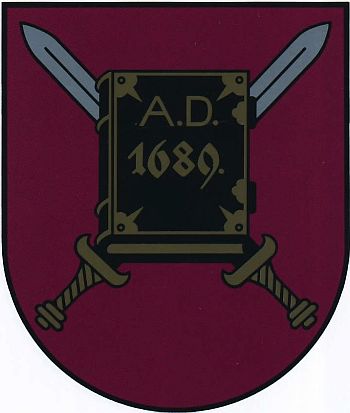Alūksne (town): Difference between revisions
Knorrepoes (talk | contribs) m (Text replacement - "{|width="100%" style="color:black; background-color:#ffffcc;" |width="15%"|50 px|left |width="70%" align="center" |'''Heraldry of the World<br/>Civic heraldry of Latvia - Latvias ģerboņi/Latvijas heraldika ''' |width="15%"|50 px|right |}<seo title="ģerboņis, heraldika" /> " to "{{latvia}}") |
Knorrepoes (talk | contribs) m (Text replacement - ".jpg|center]] ====Official blazon====" to ".jpg|center|Arms of {{PAGENAME}}]] ====Official blazon====") |
||
| Line 5: | Line 5: | ||
Municipality : [[Alūksne (municipality)|Alūksne]] | Municipality : [[Alūksne (municipality)|Alūksne]] | ||
[[File:Aluksne.jpg|center]] | [[File:Aluksne.jpg|center|Arms of {{PAGENAME}}]] | ||
====Official blazon==== | ====Official blazon==== | ||
Revision as of 10:20, 26 March 2016
Template:Latvia ALǕKSNE TOWN
Region : Vidzeme
Municipality : Alūksne
Official blazon
Purpura laukā divi sudraba zobeni ar zelta rokturi, pāri melna grāmata - Bībele ar zelta rotājumiem un tādu pašu uzrakstu "A.D./1689".
Origin/meaning
The arms were granted in 1925.
Aluksne was initially a castle of Latgali. German knights destroyed it and built their own castle Marienburg in 1342. The town was also established at the same time.
In the 17th century the German pastor Ernst Glick lived in Aluksne. He knew Latvian very well and he made the first translation of the Bible to Latvian, finished in 1689.
The town developed in the beginning of 20th century, when the narrow-gauge railway was built. In 1920 city rights were granted.
The arms were granted in 1925: the crossed swords mean ancient battles in the area, and the Bible with date 1689 notices the pastor's work.
Contact and Support
Partners:
Your logo here ?
Contact us
© since 1995, Heraldry of the World, Ralf Hartemink 
Index of the site
Literature : Latvias ģerboņi, 2008










